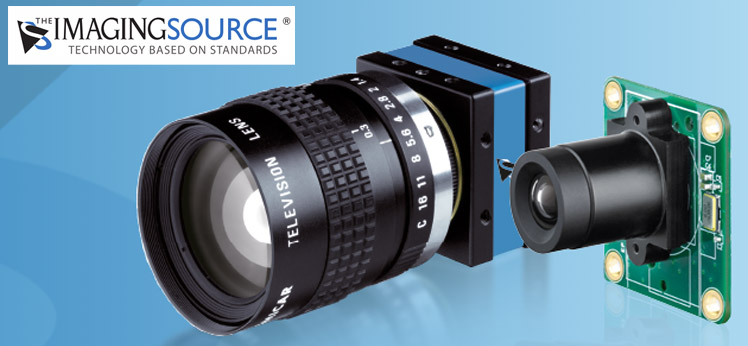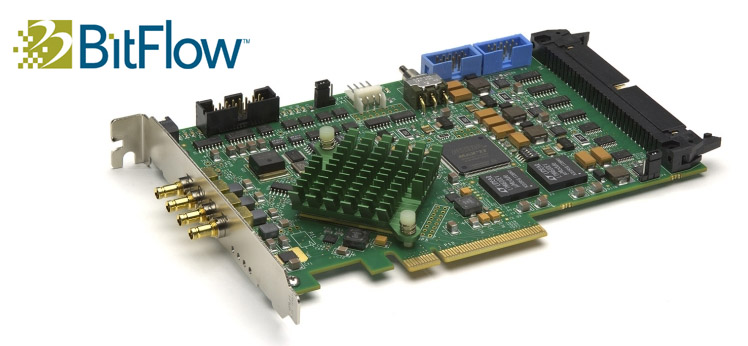Machine vision represents a diverse and growing global market, one that can be difficult to keep up with, in terms of the latest technology, standards, and product developments, as they become available from hundreds of different organizations around the world.
If you are looking for an example of how fast the market moves, and how quickly trends and new technologies emerge, our Innovators Awards provides a good reference point. In 2015, we launched our first annual Innovators Awards program, which celebrates the disparate and innovative technologies, products, and systems found in the machine vision and imaging market. In comparing the products that received distinction in 2015 to this past year’s crop of honorees, it does not take long to draw some obvious conclusions. First, let’s start with the most noticeable, which was with the cameras that received awards.
In 2015, five companies received awards for cameras. These cameras performed various functions and offered disparate capabilities, including pixel shifting, SWIR sensitivity, multi-line CMOS time delay integration, high-speed operation, and high dynamic range operation. In 2018, 13 companies received awards for their cameras, but the capabilities and features of these cameras look much different.
If you are looking for an example of how fast the market moves, and how quickly trends and new technologies emerge, our Innovators Awards provides a good reference point. In 2015, we launched our first annual Innovators Awards program, which celebrates the disparate and innovative technologies, products, and systems found in the machine vision and imaging market. In comparing the products that received distinction in 2015 to this past year’s crop of honorees, it does not take long to draw some obvious conclusions. First, let’s start with the most noticeable, which was with the cameras that received awards.
In 2015, five companies received awards for cameras. These cameras performed various functions and offered disparate capabilities, including pixel shifting, SWIR sensitivity, multi-line CMOS time delay integration, high-speed operation, and high dynamic range operation. In 2018, 13 companies received awards for their cameras, but the capabilities and features of these cameras look much different.
CAMERAS THAT RECEIVED AWARDS IN 2018 OFFERED THE FOLLOWING FEATURES:
Polarization, 25GigE interface, 8K line scan, scientific CMOS sensor, USB 3.1 interface, fiber interface, embedded VisualApplets software, 3-CMOS prism design, and subminiature design. Like in 2015, a few companies were also honored for high-speed cameras, but overall, it is evident that most of the 2018 camera honorees are offering much different products than those from our inaugural year.
There are two other main categories that stick out, in terms of 2018 vs. 2015, the first of which is software products. In 2015, two companies received awards for their software—one for a deep learning software product and another for a machine learning-based quality control software. In 2018, eight companies received awards for software.
THESE SOFTWARE PRODUCTS OFFERED THE FOLLOWING FEATURES OR CAPABILITIES:
Deep learning (three honorees), data management, GigE Vision simulation, neural network software for autonomous vehicles, machine learning-based desktop software for autonomous vehicle vision system optimization, and a USB3 to 10GigE software converter.
Lastly, the category of embedded vision looked much different in 2018 than it did in 2015. In the embedded vision category—which I am combining with smart cameras due to overlap—there were two companies that received awards in 2015, both of which were for smart cameras that offered various capabilities. This year, however, there were 12 companies that were honored for their embedded vision innovations, for products that offered features including: embedded software running on Raspberry Pi, computer vision and deep learning hardware and software platform, embedded vision development kits, embedded computers, 3D bead inspection, as well as various smart cameras.
Throughout the other categories, there was equal or similar number of honorees from both years, but there were several interesting technologies or applications that products that popped up in 2018 offered. This includes a lens for virtual reality/augmented reality applications, a mobile hyperspectral camera, a 3D color camera, and various lighting products that targeted multispectral and hyperspectral imaging applications.
This is all to say that, when looking back to 2015 to today, machine vision technology has grown quite a bit. With the rapid pace of advancements, the growing needs of customers and end users, the miniaturization and smaller costs of components, and so on; it is exciting to think about what machine vision products in 2021 might look like.
Lastly, the category of embedded vision looked much different in 2018 than it did in 2015. In the embedded vision category—which I am combining with smart cameras due to overlap—there were two companies that received awards in 2015, both of which were for smart cameras that offered various capabilities. This year, however, there were 12 companies that were honored for their embedded vision innovations, for products that offered features including: embedded software running on Raspberry Pi, computer vision and deep learning hardware and software platform, embedded vision development kits, embedded computers, 3D bead inspection, as well as various smart cameras.
Throughout the other categories, there was equal or similar number of honorees from both years, but there were several interesting technologies or applications that products that popped up in 2018 offered. This includes a lens for virtual reality/augmented reality applications, a mobile hyperspectral camera, a 3D color camera, and various lighting products that targeted multispectral and hyperspectral imaging applications.
This is all to say that, when looking back to 2015 to today, machine vision technology has grown quite a bit. With the rapid pace of advancements, the growing needs of customers and end users, the miniaturization and smaller costs of components, and so on; it is exciting to think about what machine vision products in 2021 might look like.
ALSO READ: FIVE MYTHS ABOUT ROBOTIC VISION SYSTEMS
TO KNOW MORE ABOUT VISION INSPECTION SYSTEMS IN INDIA CONTACT MENZEL VISION AND ROBOTICS PVT LTD CONTACT US AT (+ 91) 22 67993158 OR EMAIL US AT INFO@MVRPL.COM
Source - WWW.VISION-SYSTEMS.COM


